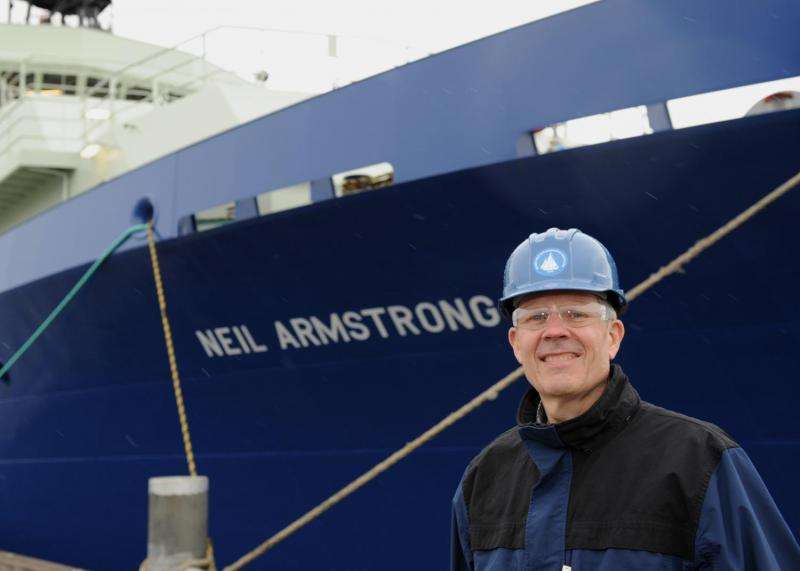ONR delivers new research vessel to Woods Hole Oceanographic Institution

Since the end of World War II, the U.S. Navy has provided state-of-the-art research ships to select universities and oceanographic institutions to facilitate mutually beneficial scientific studies of the marine environment. On Sept. 23, the Dakota Creek Industries shipyard in Anacortes, Washington, delivered the newest research vessel, R/V Neil Armstrong, to the Navy's Office of Naval Research (ONR)—which then turned it over to the Woods Hole Oceanographic Institution in Massachusetts.
The Navy and other federal agencies fund the construction of oceanographic research ships, and provide them to U.S. academic institutions for operational management and use. This enables the contributing agencies to take advantage of research opportunities using the entire U.S. academic research fleet, providing a range of ship sizes and capabilities, cooperative missions and significant cost savings. The Neil Armstrong will be operated by Woods Hole under a charter agreement with ONR.
"The U.S. Navy is proud to support the national research fleet by delivering state-of-the-art research vessels like the R/V Neil Armstrong," said Chief of Naval Research Rear Adm. Mat Winter. "The Navy's innovative scientific mission will directly benefit from the fielding of this next-generation research ship focused on maritime technology discoveries and break-through capabilities."
Named after the first person to walk on the moon, the Neil Armstrong will replace the Navy-owned R/V Knorr, which Woods Hole—a private, nonprofit organization dedicated to marine research—has operated since 1970. The Knorr is a celebrated vessel, serving as the command ship during the discovery of the deep ocean thermal vents (nicknamed "black smokers") in 1977 and the wreck of the RMS Titanic in 1985.
"During its 45-year career, the Knorr sailed millions of miles and supported significant oceanographic projects," said Program Officer Tim Schnoor, who oversees ONR's research vessel programs. "There is still much to be learned about our oceans and the Neil Armstrong will certainly be a part of future discoveries."
The Neil Armstrong will be a deep-ocean, general-purpose research vessel used for a wide range of scientific studies—including ocean chemistry and geology, underwater acoustics, marine biology and ecosystem management, and marine technology development. Some of this work will be essential to gaining a greater understanding of the Earth's changing climate and learning more about the ocean environment in which the Navy operates, said Schnoor.
The 238-foot vessel can sail on cruises as long as 40 days and accommodate both a 20-person crew and up to 24 scientists. The Neil Armstrong has multibeam bottom-mapping sonar, advanced meteorological sensors and satellite data transmission systems. It also features the latest navigation and ship-positioning systems and a specially designed hull that improves sonar acoustic sensing.
Now that it's in the hands of Woods Hole, the Neil Armstrong will spend the next month being outfitted with equipment, spare parts, food and other supplies needed for research cruises. Afterward, it will embark on "shake-down" cruises, a transit through the Panama Canal and maintenance on the East Coast. There, the ship's science equipment will be installed, particularly its sophisticated sonar systems and other ocean sensors.
The Neil Armstrong and other Navy-owned vessels are among the largest in the U.S. academic research fleet, enabling global ranging research programs. Early next year, the Neil Armstrong will undergo a series of science verification cruises to test its installed mission systems and ensure its readiness for conducting research missions. Its first science mission is planned for May 2016 in the North Atlantic.
Provided by Office of Naval Research











